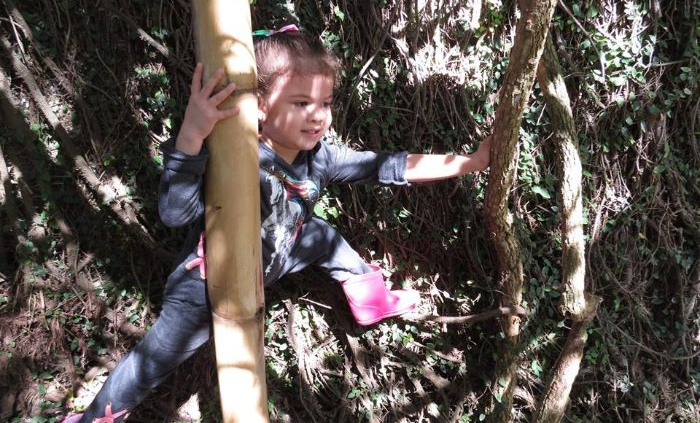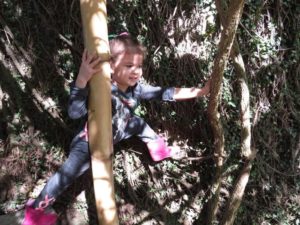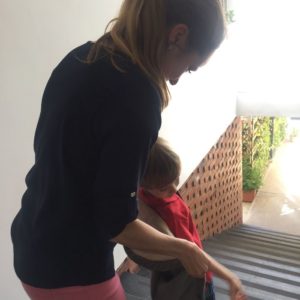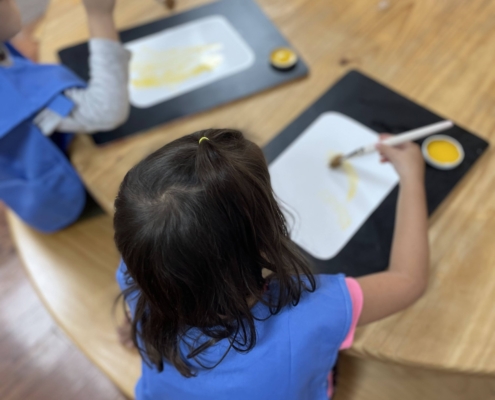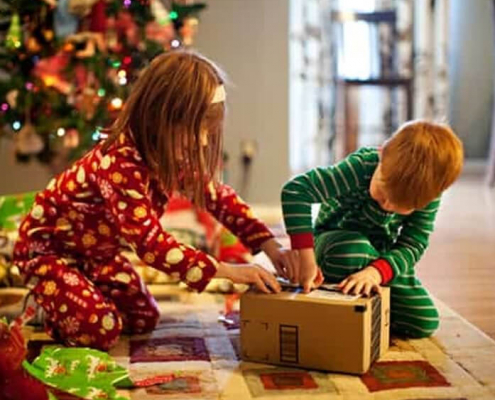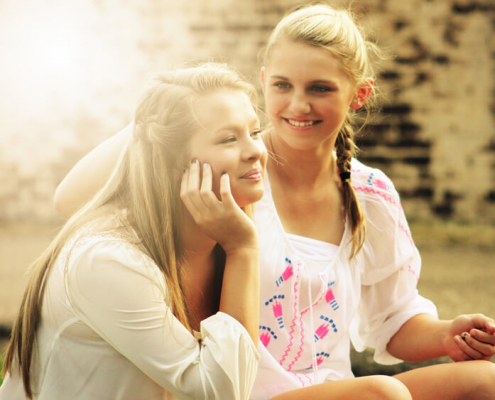The Gift Of Boundaries In Early Childhood
By Julie Moon
Very young children learn in an immediate,
participative way and come to know and make
the world their own through physical activity
(Steiner, 1996 [1907]).
In her book, Early Childhood Wisdom Ebba Bodame calls it the gift of boundaries that we must set for our children.
Sometimes we feel mean if we tell the children “its bedtime”; “put a warm jacket on” and their response is “no”. Then we go into explaining why they should go to bed or put their jacket, instead of simply expressing the physical need and add a storyline. For example, “it’s time to go to bed now. Your very own star is ready to sparkle for you”; or “let´s put on our jackets and button them up so the cheeky wind cannot blow them off”. So we create a story around bedtime which defuses the “no”. We are not entering into an argument about it.
On the other hand, we need to work on OUR boundaries and give their imagination free expression. We should not interfere in our child’s imaginative play by saying “why don’t you build the tower a little taller” or “add some blue here”. Everything they do is from their own creativity and must be nurtured.
We do have to set boundaries with their daily rhythm. We need to create a time for rest and a time for activities. We need to establish this rhythm with bathing, eating, playing, sleeping, etc. Therefore, by asking the child, “Do you want dinner?” or “Would you like to go to sleep?” is based on a mistaken belief that the child is able to make these decisions, which they are not able to do so. It is our responsibility in these early years to provide guidance where we should. The child will feel secure when he feels his caregiver knows about life.
We need to keep in mind that the child at this age can not discern, they are learning through imitation that the world is a good place, and they have a sense of trust that their caregivers know what is best for them. Therefore, it’s our responsibility to help them grow wholesome in all areas and guide them through a balanced life.
Bodame says that meeting boundaries is uncomfortable, and it often brings conflict. But for the young child meeting boundaries brings strength. The child will grow in strength and resilience if he is allowed to feel and push against a firm boundary. If the boundary collapses when the child pushes against it, he is unsupported and falls. She says, “though he may get what he wants, an opportunity for building resilience and trust is lost”.
Rhythm is our great supporter in setting boundaries. At school, we have a good rhythm and the children move from one activity to the next, smoothly, from packing away our toys when they hear “there was a little busy gnome who said it’s time to tidy our home” or when we light the candle before food. When the rhythm is set for going to bed there is no need to explain.
In the chapter ‘clear messages and limited choices’ from the book Beyond the Rainbow Bridge by Barbara J Patterson and Pamela Bradley, says that some parents grew up with such strong discipline that they do not wish to employ it on their own children, resulting in too little structure, too much confusion and are suffering from too little discipline. Therefore, instead of asking them to do something, we can make it a statement by adding “may” so it is not as direct. For example, “you may hang up your coat” or “you may place your boots on the mat”.
Lisa Gromicko a teacher from Shining Mountain Waldorf School in Boulder beautifully says “the creativity of this stage is truly monumental, as the ‘wheel is re-invented’ and other foundational concepts are literally re-discovered over and over».
I hope that this helps with your understanding of the importance of creating boundaries which then enables the child to feel safe and engage fully in their creativity.

